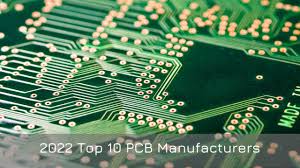FR4 Material Defined
FR4 is a common grade, used for most PCBs (Printed Circuit Boards), of Composite Material composed of woven Fiberglass Cloth with an Epoxy Resin Binder that is flame resistant (self-extinguishing). Its most common application is in Printed Circuit Boards (PCBs)findViewById The FR in FR4 stands for flame retardant and the number 4 gives the order of the material devastate.
Thermal Properties
FR4 has incredible thermal resistance,ellites For example, FR4 can usually be used up to 130°C without any significant degradation, leading to more reliable electronics for demanding high-temperature environments. This is an improvement upon other materials, such as CEM1, and CEM3, which typically has a lower thermal resistance, sometimes peaking around 110°C, and 120°C respectively.
Strength and Durability of the Material
This mechanical strength of FR4 is very significant for existing electronic assembles to guarantee durability. Its tensile strength can be up to 350 MPa whereas other plastic based-strubstrates have tensile strength of around 100–200 MPa. FR4 is widely used as a structural component because of its high mechanical strength and ensures devices to be able to take on mechanical stress during manufacturing, transportation, and operation.
Electrical Performance
FR4 is stable in terms of electrical insulation with a constant dielectric (εr=4 at 1 mhz). This characteristic is required to preserve signal integrity for high-frequency applications. While Polyimide and Rogers materials (and many other alternative materials) potentially provide lower dielectric constants and better performance at high frequencies, for many standard non-specialist requirements FR4 is a cost-effective solution with performance that is 'good enough'.

Affordability: This attribute has to do with the value that a certain product brings to its users, compared to the cost.
One of the main advantages of FR4 is that it is the most economical material(pDX Member). While considerably less expensive and easier to obtain than high-performance materials such as Rogers 3000, 4000, and 6000 series (which sometimes cost five to ten times these), FR4. FR4 is thus suitable for a vast array of electronic applications, from consumer electronics to automotive components.
Applications and Limitations
While FR4 is fine for a variety of applications, it is limited for the very high-frequency use, or high-temperature environments where something like Polyimide or PTFE would be more appropriate. On the other hand, the capability (FR4) is generally used for most general electronics, automotive circuit and consumer devices as a reputable trade-off when it comes to performance and cost.
Environmental Considerations
Notwithstanding, FR4 plays its role in environmentalism, especially in matters that are related to the disposal and recycling of waste. If the material is impregnated with epoxy resin, but not presented as a final product, it can release toxic chemicals that are dangerous for people to come into contact with. But, as recycling technology advances, many of these problems will be reduced, making FR4 more viable in the long run.
A Comparison to Other Materials
Aluminum has very good thermal conductivity; Polyimide performs relatively well at high frequencies. While FR4 isn´t a miracle material it is a very good all-rounder and in practice is the most common medium used in designing PCBs for many different types of electronics.
So, to sum up, the characteristics of FR-4 material make it an essential part of the PCB world because balance it offers in its properties is able to meet the needs of most electronics projects. Not only is it cheap, but it has excellent thermal and electrical performance making it a nice option for the fresh enthusiast as well as seasoned engineer. FR4 material: you can read more details from here.
